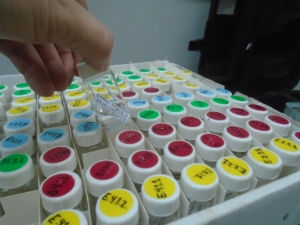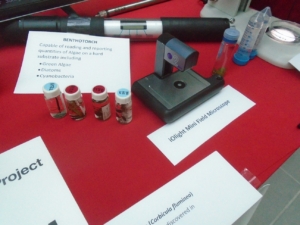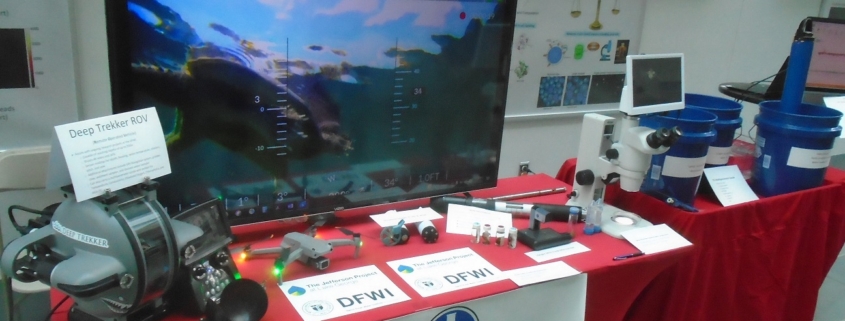Research and Monitoring of Macroinvertebrates
Feature photo: The Darrin Fresh Water Institute display. See https://dfwi.rpi.edu/ for more information.
Article and photos by FMN Stephen Tzikas
On October 7, 2022, I had the opportunity to attend the Rensselaer Polytechnic Institute (RPI) Research Showcase in Troy, NY at the Shirley Ann Jackson, Ph.D. Center for Biotechnology and Interdisciplinary Studies (CBIS). It was an opportunity for RPI alumni and guests to experience first-hand the research that shapes and leads innovation on a global scale. I was particularly attracted to the display for the Jefferson Project of the Darrin Fresh Water Institute. The Jefferson Project at Lake George, a collaboration between RPI, IBM Research, and The FUND for Lake George, studies fresh water ecological systems to understand impacts of human activities and how to mitigate those effects. Research being conducted can be found here: https://dfwi.rpi.edu/research/projects
My career has been in environmental engineering and the modeling of resources.

Macroinvertebrate types at the Darrin display being reviewed by the author.
I also volunteer for Fairfax County macroinvertebrate monitoring. Hence, the display was a fascinating convergence of the three topics. While there, an alumna started discussing macroinvertebrate modeling to water parameters. I had not realized the enormous amount of research that was being conducted over the years on macroinvertebrates as it related to their importance for environmental monitoring.
Lake George is a source of clean drinking water, food, and recreation. It has an eco-system of macroinvertebrates. Thus, I had a new context for macroinvertebrate monitoring in Fairfax County. Tiny macroinvertebrates are

Darrin Fresh Water Institute table close-up.
essential for the complex food chain in Lake George. Clams, mussels, snails and some insect larvae consume algae and control its overgrowth. Amphipods and isopods, through their shredding activity (called detritus processing), are essential for recycling nutrients in the lake, and are a source of food for fish. Macroinvertebrates are generally sensitive to pollution, warming of the lake due to climate change, and disturbances from shoreline development. Researchers want to understand what environmental factors determine the spatial distribution of macroinvertebrates, the population dynamics of important species, and how human activity is affecting this ecosystem. This is important given that these species are indicators of water quality.
Researchers use a variety of tools to collect the macroinvertebrates and understand the complex food chain at Lake George. Researchers survey the physics, chemistry, and biology of Lake George and also conduct experiments to investigate how some invasive species of Lake George interact, and how they may be affecting the water quality of the lake.
Those who might be interested in the Northern Virginia Soil and Water Conservation District’s Volunteer Stream Monitoring should review this link:
https://www.fairfaxcounty.gov/soil-water-conservation/volunteer-stream-monitoring
Those interested in reading some recent macroinvertebrate research papers should review these references found on the Internet:
• Sci. Technol. 2019, 53, 10, 6025–6034, Modeling the Sensitivity of Aquatic Macroinvertebrates to Chemicals Using Traits, Van den Berg et al.
• Water, 16 September 2021, Sec. Water and Human Systems, Volume 3 – 2021, https://doi.org/10.3389/frwa.2021.662765 , Benthic Macroinvertebrates as Ecological Indicators: Their Sensitivity to the Water Quality and Human Disturbances in a Tropical River, Tampo et al.
• Journal of Freshwater Ecology, Volume 36, 2021, Development of a predictive model for benthic macroinvertebrates by using environmental variables for the biological assessment of Korean streams, Min and Kong.




